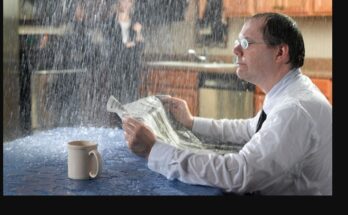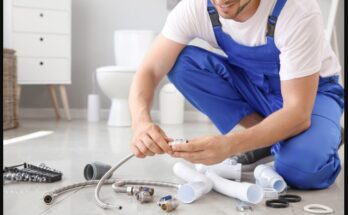As the temperatures drop, preparing your plumbing for the cold weather is essential to prevent costly damages and ensure a smooth, uninterrupted water supply.
Cold weather can cause pipes to freeze and burst, leading to significant repairs and inconvenience. Here’s a comprehensive guide on how to winterize your plumbing system effectively.
Contents
- 1 Introduction
- 2 Inspect Your Plumbing System
- 3 Insulate Your Pipes
- 4 Seal Leaks and Gaps
- 5 Drain Outdoor Faucets and Hoses
- 6 Protect Your Water Heater
- 7 Keep Your Home Warm
- 8 Let Faucets Drip
- 9 Know HoFreezingt Off Water Supply
- 10 Check for Vulnerable Areas
- 11 Additional Tips for Extreme Cold
- 12 FAQs
- 13 Conclusion
Introduction
Winter is coming, and that means it’s time to prepare your home for the colder months ahead. One critical area that needs attention is your plumbing system.
Freezing temperatures can wreak havoc on pipes and fixtures, leading to bursts, leaks, and costly water damage. You can safeguard your plumbing and avoid wintertime disasters by taking proactive steps.
Inspect Your Plumbing System
1. Perform a Thorough Inspection
Start by inspecting your entire plumbing system. Look for any signs of wear and tear, such as cracks, leaks, or corrosion. Pay special attention to areas where pipes are exposed, such as basements, attics, and crawl spaces.
2. Fix Minor Issues
Address any minor plumbing issues you find during your inspection. Small leaks or cracks can worsen during cold weather, so fixing them before temperatures drop is best.
Insulate Your Pipes
1. Use Pipe Insulation
Insulating your pipes is one of the most effective ways to prevent them from freezing. Use foam pipe insulation to cover exposed pipes, especially those in unheated areas. This material is easy to install and provides a protective layer against the cold.
2. Heat Tape or Cables
For added protection, consider using heat tape or heat cables. These electrical devices can be wrapped around pipes to keep them warm during freezing temperatures. Ensure they are installed according to the manufacturer’s safety instructions instructions.
Seal Leaks and Gaps
1. Check for Drafts
Inspect your home for any cracks that allow cold air to enter. Common areas include windows, doors, and around plumbing penetrations. Sealing these leaks can help maintain a warmer environment for your pipes.
2. Use Caulk and Weatherstripping
Seal any gaps or leaks with caulk and weatherstripping. These materials are inexpensive and effective at keeping cold and warm air out.
Drain Outdoor Faucets and Hoses
1. Disconnect and Store Hoses
Disconnect garden hoses from outdoor faucets and drain any remaining water—store hoses in a dry place to prevent them from freezing and cracking.
2. Shut Off Outdoor Faucets
Shut off the water supply to outdoor faucets and drain the remaining water. If your outdoor faucets have shut-off valves inside the house, close them and open the outdoor faucets to let any remaining water drain out.
Protect Your Water Heater
1. Insulate the Water Heater
Wrap your water heater with an insulation blanket in an unheated area. This helps retain heat and reduces the risk of freezing.
2. ChecFreezingmperature Setting
Ensure your water heater is set to a safe temperature. The ideal temperature is around 120°F (49°C) to prevent scalding and save energy.
Keep Your Home Warm
1. Maintain a Consistent Temperature
Keep your home at a consistent temperature, even when you’re not there. Set your thermostat to at least 55°F (12°C) to prevent pipes from freezing.
2. Open Cabinet Doors
Open cabinet doors under sinks to allow warm air to circulate the pipes. This is especially important for sinks located on exterior walls.
Let Faucets Drip
1. Prevent Freezing
Letting Freezingdrip slightly can prevent pipes from freezing. Moving Freezing is less likely to freeze, and this small trick can relieve pressure in the pipes, preventing them from bursting.
2. Focus on Vulnerable Areas
Pay attention to faucets and pipes located in unheated areas of your home. Letting these faucets drip can be particularly effective in preventing freezing.
Know HoFreezingt Off Water Supply
1. Locate the Main Shut-Off Valve
Make sure you know where your home’s main water shut-off valve is located. In case of a burst pipe, you can quickly turn off the water supply to minimize damage.
2. Educate Your Household
Ensure everyone in your household knows where the shut-off valve is and how to operate it. This knowledge can be crucial in an emergency.
Check for Vulnerable Areas
1. Identify Problem Spots
Identify areas in your home particularly vulnerable to freezing, such as attics and garages. Take extra precautions in these areas to protect your plumbing.
2. Add Extra Insulation
Add extra insulation to vulnerable areas. This can include adding insulation to walls, floors, and around pipes to keep them warm.
Additional Tips for Extreme Cold
1. Use Space Heaters
Consider using space heaters in unheated areas to keep the temperature above freezing in extreme cold. Ensure Freezingaters are used safely and kept away from flammable materials.
2. Monitor Weather Forecasts
Stay informed about weather forecasts and be prepared to take extra precautions during severe cold snaps. Having a plan can help you react quickly to protect your plumbing.
FAQs
1. Why is it essential to prepare plumbing for cold weather?
Preparing your plumbing for cold weather prevents pipes from freezing and bursFreezingich, which can lead to costly repairs and water damage.
2. How does pipe insulation help?
Pipe insulation helps maintain the water temperature inside the pipes, preventing them from freezing during cold weather.
3. What should I do if my pipes freeze?
If your pipes freeze, turn off the main water supply and use a hairdryer or heat lamp to thaw the pipes. Never use an open flame to thaw pipes.
4. Can I use heat tape on all types of pipes?
Heat tape can be used on most types of pipes, but following the manufacturer’s instructions and safety guidelines for proper installation is essential.
5. How often should I inspect my plumbing system?
Inspecting your plumbing system at least once a year, ideally before the onset of winter, is a good practice to identify and address any potential issues.
Conclusion
Preparing your plumbing for cold weather is essential to avoid the headaches and costs of frozen and burst pipes.
By taking these proactive steps, you can ensure that your plumbing system remains in good condition throughout winter.
Remember, a little preparation goes a long way in keeping your home safe and warm. Stay ahead of the cold and protect your plumbing today!
If you gained new insights from this article, explore our blog, Gimkit, for more enlightening content.



